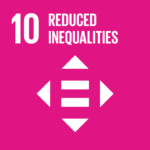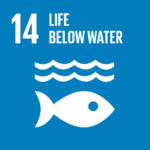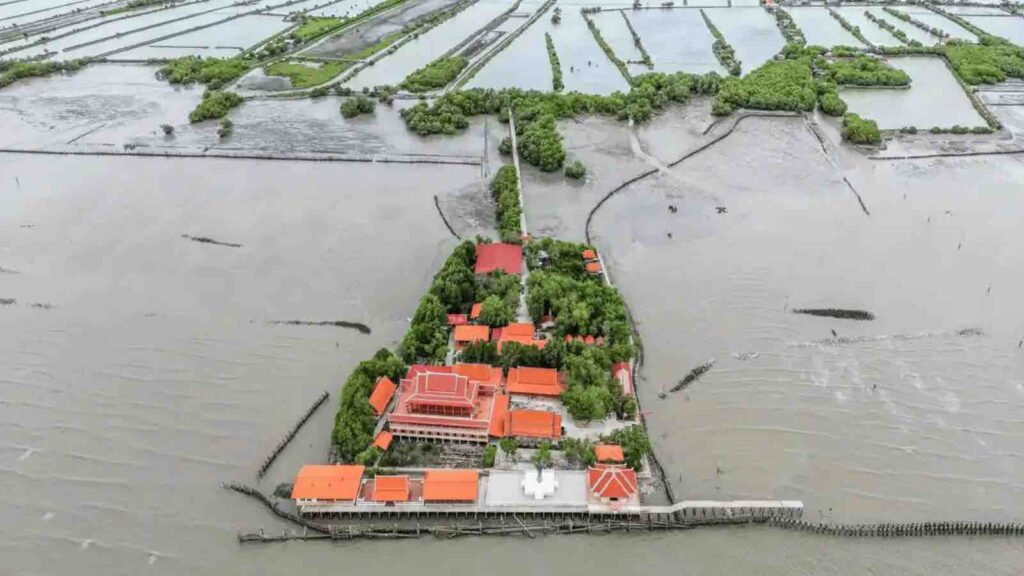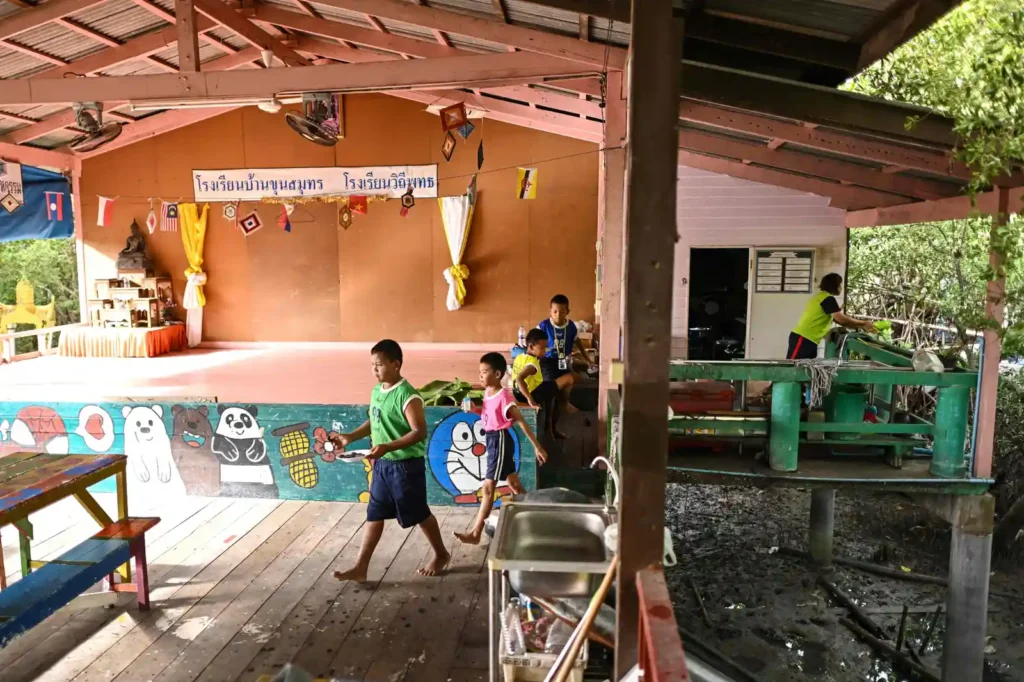Mismanagement exacerbates rising sea levels at Ban Khun Samut Chin. While mangroves could defend against waves and surges, many were removed to establish shrimp farms, weakening the area’s natural defenses.
Ban Khun Samut Chin, a village situated on Thailand’s Chao Phraya Delta, is a living testament to the relentless rise in sea levels, with visible signs of its slow but steady descent beneath the water’s surface. It stands, or rather, floats as a haunting reminder of climate change’s palpable impacts, with structures like schools, temples, and electric poles emerging like isolated islands in an expanding sea.
RELEVANT SUSTAINABLE GOALS




Vanishing Homelands: The Fate of Ban Khun Samut Chin
Wisanu Kengsamat, the village chief, speaks with the weariness of one who has witnessed his birthplace undergo drastic transformations. “In the 60 years since my birth here,” Wisanu reflects, “approximately two square kilometers of our land have been claimed by the sea.”
Now, the village’s Buddhist temple resembles a lonely islet, erected on posts and linked to the mainland by a slender footbridge. The local school, perched on concrete stilts after being relocated twice, currently serves merely four students.
From a thriving community of 100 households, Ban Khun Samut Chin has seen its population dwindled to around 80 households, with its numbers further halved. Forced to retreat inland, some residents have relocated up to eight times, while others have abandoned the village entirely, leaving behind submerged lands to which they hold now-irrelevant title deeds.
A Double-Edged Sword: Natural Changes and Human Error
According to the State of Global Climate 2022 report by the World Meteorological Organization, the average global sea level has been rising at an alarming rate of 4.62 mm annually from 2013 to 2022, with projections indicating a continuous increase for centuries, even if global warming is capped at 1.5 degrees.
In Ban Khun Samut Chin, however, human intervention has exacerbated the damage caused by natural phenomena. The once-protective mangrove forests that shielded the village from robust waves and storm surges were decimated to pave the way for shrimp farms. This misstep was compounded by dam constructions on the Chao Phraya River, leading to sediment accumulation and subsequent stream blockages. Groundwater extraction practices have further aggravated the situation.
In Ban Khun Samut Chin, however, human intervention has exacerbated the damage caused by natural phenomena. The once-protective mangrove forests that shielded the village from robust waves and storm surges were decimated to pave the way for shrimp farms. This misstep was compounded by dam constructions on the Chao Phraya River, leading to sediment accumulation and subsequent stream blockages. Groundwater extraction practices have further aggravated the situation.
Resilience Amidst the Rising Tides
Despite the encroaching waters and disappearing land, life persists in Ban Khun Samut Chin. The remaining 200 residents have pivoted towards eco-tourism, offering homestay programs that not only provide income but also serve as educational platforms for tourists interested in conservation.
In collaboration with Chulalongkorn University, the villagers actively participate in research projects aimed at conservation. Efforts include installing bamboo and concrete pillars and engaging in mangrove reforestation initiatives.
Education, too, adapts and endures. The village school imbues its sparse student body with lessons on climate change, conservation, local ecology, and the history of their submerged homeland. For students like Jiranan, these lessons inspire hope and ambition. “I aspire to be a teacher,” Jiranan shares earnestly, “Hopefully at this school, if it still stands.”
Ban Khun Samut Chin encapsulates the tragic yet resilient story of communities on the front lines of climate change. As sea levels inexorably rise, swamping lands and altering lives, the village remains afloat, buoyed by the indomitable spirit of its people and a desperate hope for survival amidst the encroaching waves. Their story, while unique, echoes the global narrative of climate change, serving as a poignant reminder of the immediate and tangible threat posed to vulnerable communities worldwide.
Lead image courtesy of Manan Vatsyayana/AFP/Getty Images. The Buddhist temple surrounded by seawater with the Bangkok skyline visible in the distance.
You may also be interested in :
10 Inspiring Social Justice And Activism To Follow On Instagram



